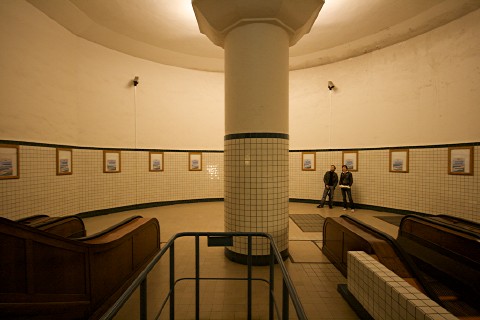Things start to become exciting. On the upcoming conference Sensory Powers and Urban Lives I will give an introductory presentation. This will be the first occasion to speak about my current book-in-progress, which runs under the working title From meaning to sense. Social science in motion. I am really looking forward to present my thoughts in a setting that represents the place of origin (if there is one) for the whole argument: the sensory experience of built environments and the many modes in which it interacts with and affects the sociology and the politics of everyday life. Here is the abstract for my presentation:
The establishment of social control through the design of built space is marked by pervasiveness. In contemporary urban life one is always embedded in, crossing through and permeated by atmospheres, paths and boundaries. Rarely is this power encountered “Head On”, such as the concrete wall against which the migrant hero of the breathtaking movie of the same name crashes. Usually urban life is shaped by more subtle interactions, by changes in texture, rhythm, smell, opacity etc. These changes as such are subtle not because they are small or imperceptible. They are subtle because they are not recognized as such, they establish themselves below the skin, below the threshold of attention. This interplay of material effects and corporal affect is difficult to put into words. If one tries to “capture” this interplay, to get analytic hold of it and to interpret its meaning – then it coagulates to words, loses its characteristic fluidity and power.
How to deal with the characteristic subtlety of the sensory powers that permeate urban life? The social sciences deal with meaning. They provide tools to dissect the meaning that is negotiated in discourses. They can measure what kind and possibly even how much meaning people ascribe to the terms and constructs that one asks them about. They are caught up in the web of words that they capture and produce at the same time. A slight change in tone, a shift in words, however, can signal important differences. What if the interpretation shifts from the interpretation of meaning, of that which is put into static words, to the interpretation of sense, to the interpretation of moving sensibilities, of directions instead of places? What happens if the work of the researcher does not stop at words and their meaning, if it follows the sense of direction that is embodied in, that is constantly generated in the field that is studied? What kind of access to the sensory powers of urban life can be gained by following the sensory, productive, mobile powers of urban life? How can these powers be evoked instead of captured? How can one take hold of the constant flow of events and still unfold and display its character – without transposing it into a realm beyond everyday life, without just producing words, mere signifiers of entities that are not there, shadows of reality? How can subtle powers be made accountable on the hither side of words?
I am really looking forward to discussing these questions with the audience and the other presenters over the course of the two-day conference, which is generously hosted by Mónica Degen and Catharina Thörn.
 Three weeks ago, Alexander Schellow and I conducted a workshop called spatial research at the
Three weeks ago, Alexander Schellow and I conducted a workshop called spatial research at the